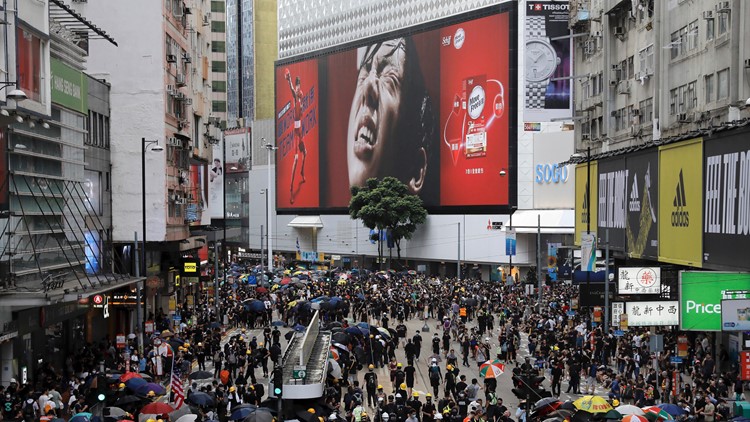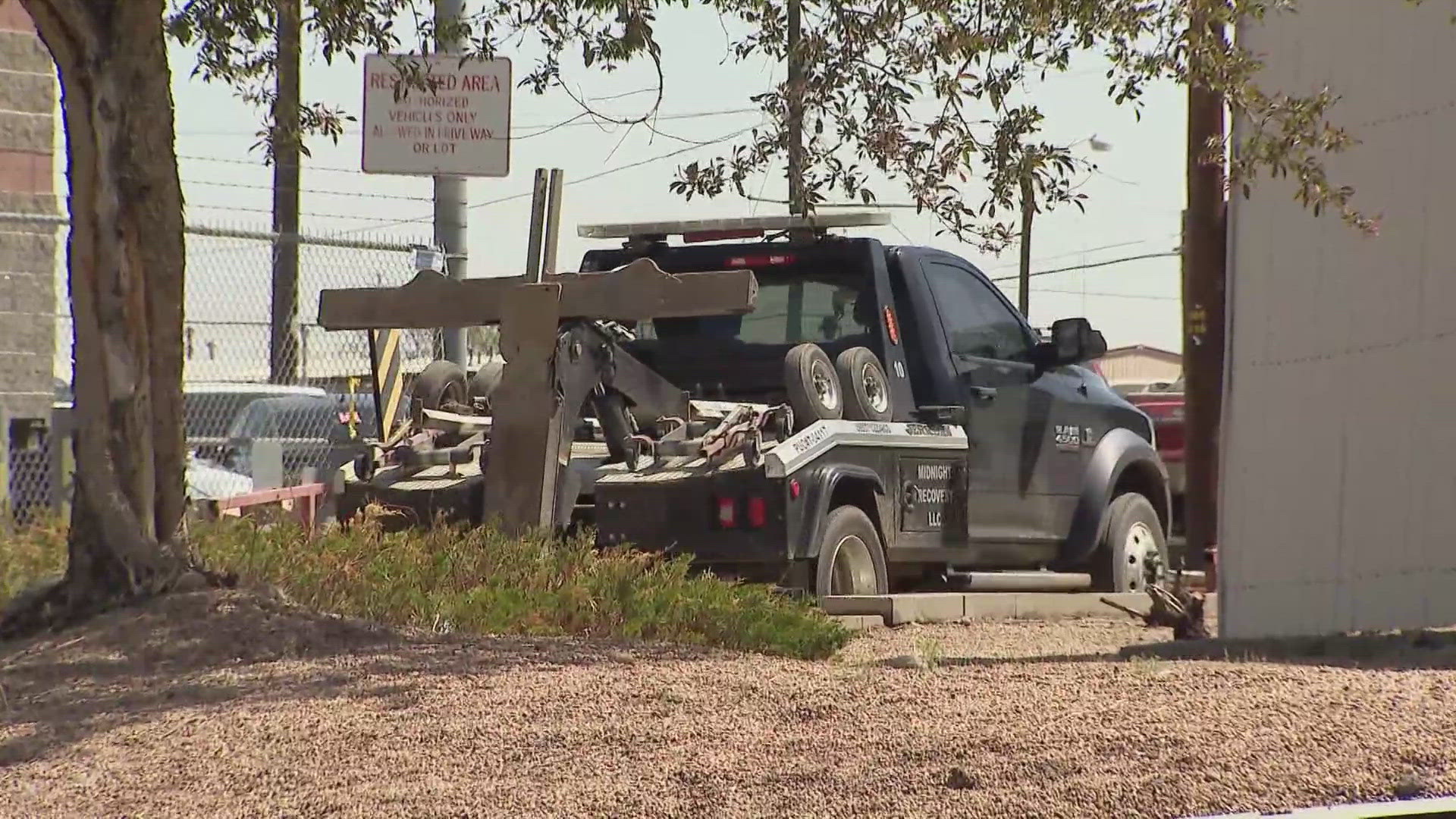A large group of protesters took over a major street in a Hong Kong shopping district late Sunday afternoon, setting up barricades to block off the area and defend it against police.
The unexpected move followed a short rally at a public park against the use of tear gas, rubber bullets and other force by police to break up a protest the previous Sunday. A sea of black-shirted protesters, some with bright yellow helmets and masks, streamed out of Chater Garden, a park in Hong Kong's financial district.
Chanting "Add oil," a phrase that roughly means "Keep up the fight," the crowd marched east down a wide thoroughfare in central Hong Kong in the latest demonstration in what has become a summer of protest in the semi-autonomous Chinese territory. They stopped near the Sogo department store.
Two other groups headed in other directions, one toward the west, where mainland China's Liaison Office is. Last weekend, protesters egged the office and splattered black ink on China's national emblem, eliciting an angry reaction from the Chinese government.
Police had denied permission to the organizers to march west to the Sheung Wan district, where the tear gas was used.
Hong Kong has been wracked by protests for seven weeks, as opposition to an extradition bill has morphed into demands for the resignation of the city's leader and an investigation into whether police have used excessive force in quelling the protests.
Underlying the movement is a broader push for full democracy in the territory. The city's leader is chosen by a committee dominated by a pro-Beijing establishment, rather than by direct elections.
Police had denied a request from protest organizers to march about 2 kilometers (1.4 miles) west to Sun Yat-sen Memorial Park, citing escalating violence in clashes with protesters that have broken out after past marches and rallies.
"The police must prevent aggressive protesters from exploiting a peaceful procession to cause troubles and violent clashes," said Superintendent Louis Lau of the police public relations branch.
On Saturday, clashes between protesters and police led to 11 arrests and left at least two dozen injured in an outlying district toward the border with mainland China.
The police had also denied permission for that march in Yuen Long, where a mob apparently targeting demonstrators had beaten people brutally in a train station the previous weekend.
Protesters and police faced off in the streets well into the night, as they've done repeatedly during the summer's pro-democracy protests.
Police said protesters removed fences from roads to make their own roadblocks and charged police lines with metal poles. One group surrounded and vandalized a police vehicle, causing danger to officers on board, a police statement said.
Officers fired tear gas and rubber bullets as demonstrators threw bricks and other objects and ducked behind makeshift shields.
Later, police wearing helmets charged into the train station, where a few hundred protesters had taken refuge from the tear gas. Some officers swung their batons at demonstrators, while others appeared to be urging their colleagues to hang back. For the second week in a row, blood was splattered on the station floor.
Police arrested 13 people, including march organizer Max Chung, for offenses including unlawful assembly, possession of offensive weapon and assault, according to police and Hong Kong media. At least four officers were injured.
The Hospital Authority said 24 people were taken to five hospitals. As of Sunday morning, eight remained hospitalized, two in serious condition.
Amnesty International, the human rights group, called the police response heavy-handed and unacceptable.
"While police must be able to defend themselves, there were repeated instances today where police officers were the aggressors," Man-kei Tam, the director of Amnesty International Hong Kong, said in a statement.
Police said they had to use what they termed "appropriate force" because of the bricks and other objects thrown at them, including glass bottles with a suspected corrosive fluid inside.
___
Associated Press writer Ken Moritsugu in Beijing contributed to this report.



